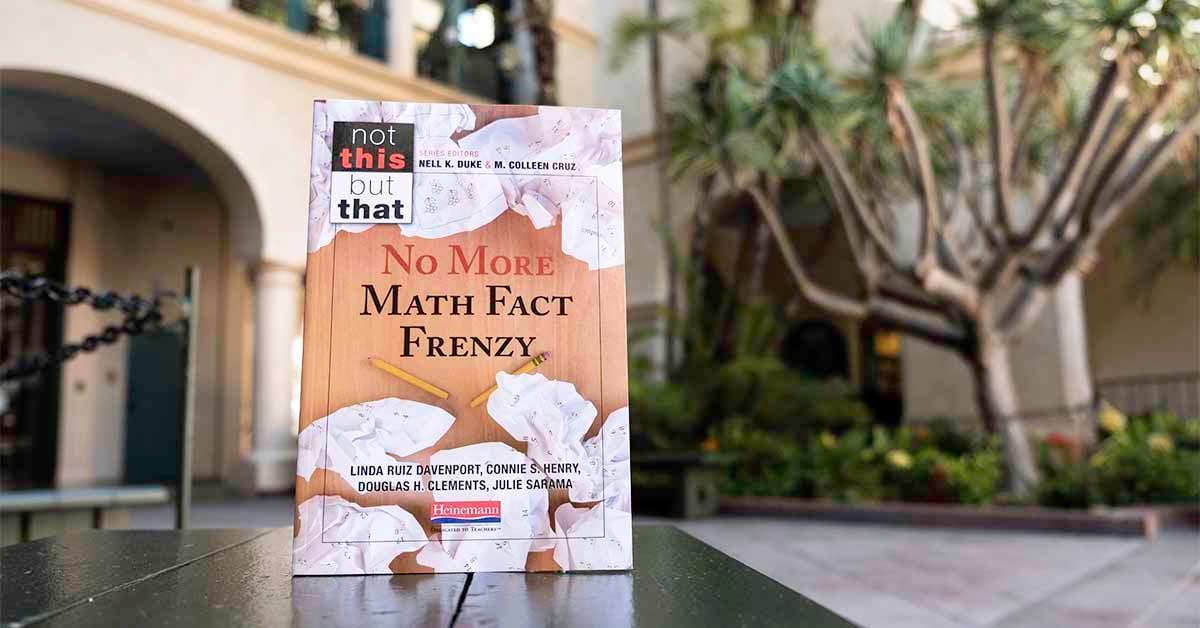
In classrooms where students are successfully learning their number facts, you'll see teachers listening and responding to student thinking in ways that encourage and promote their flexibility with numbers. This includes creating a classroom culture that encourages students to take risks as they attempt to put numbers together and pull them apart, acknowledges that mistakes are opportunities to learn, and celebrates the mathematical insights that come from sharing and discussing strategies for operating with numbers. When this classroom culture is in place, there is a buzz in the room, with children doing, thinking, talking, and listening like mathematicians making sense of their work.
The role of the teacher in building students’ number sense and fluency with number combinations includes:
- Setting learning goals and posing “just-right” problems.
- Asking questions to help students build on what they know as they work together to solve problems.
- Using different students’ ideas and strategies in a whole-class discussion that builds connections across these ideas and strategies.
These approaches are consistent with the design of a student-centered lesson (Smith and Stein 2011) that supports student thinking and reasoning and helps build the strong conceptual foundations that are important for supporting fluency.
Let’s look more closely at each aspect of the teacher’s role and consider how to plan for this kind of instruction.
Setting Learning Goals and Posing “Just-Right” Problems
Understanding specifically what students know and can do allows a teacher to use a learning progression to identify a goal and pose a “just-right” problem. For instance, a foundational idea is cardinality, the idea that the last number counted represents the total quantity of the set, so an activity that involves counting and stating “how many” would be appropriate.
When thinking about a goal for developing fluency, consider a learning goal rather than just a performance goal. While you may want students to demonstrate their learning during the lesson and perhaps on an exit ticket at the end of the lesson, student learning rather than student performance should be the driver. This can support a culture of sharing and risk-taking rather than one of anxiety and unproductive competition.
Asking Questions
- What do you notice?
- What do you notice?
- Can you tell the story in your own words?
Is your answer reasonable?
These simple questions can help empower students to look for and explore arithmetic properties, patterns, and relationships. They communicate that students have ideas worth talking about. While planning for a set of problems, teachers can anticipate what key ideas and strategies might arise and plan questions that might help students if they are stuck.
It can be challenging to restrain ourselves from correcting students when they make mistakes, but here too, questions can help. We have found that students often self-correct if given the opportunity to explain their thinking. Sometimes asking students “How do you know?” is sufficient to uncover both what they know and what is incorrect.
Using Students’ Ideas and Strategies to Build Connections
After students have worked independently and in small groups, gather the whole class to facilitate a discussion based on your learning goal and what strategies, ideas, and struggles you have observed.
Discussions at the end of a lesson can help students consolidate their learning and push their mathematical understanding and use of efficient strategies. By encouraging student-to-student talk, you are also encouraging them to use their own “funds of knowledge” to do math and communicate their thinking.
…
The above has been adapted from No More Math Fact Frenzy. Learn more at Heinemann.com
 Follow us on Instagram @heinemannpub to stay up to date on the latest books, your favorite authors, and upcoming events!
Follow us on Instagram @heinemannpub to stay up to date on the latest books, your favorite authors, and upcoming events!
Linda Ruiz Davenport is the Director of K–12 Mathematics for Boston Public Schools and supports mathematics teaching and learning district-wide.
Follow her on Twitter @LindaD_BPSMath
Connie S. Henry is an Assistant Director of K–12 Mathematics for Boston Public Schools. She has taught and coached math for many years.
Douglas H. Clements is the Kennedy Endowed Chair in Early Childhood Learning and Distinguished University Professor at the University of Denver.
Follow him on Twitter @DHClements
Julie Sarama is the Kennedy Endowed Chair in Innovative Technologies and Distinguished University Professor at the University of Denver.
Follow her on Twitter @JulieSarama



